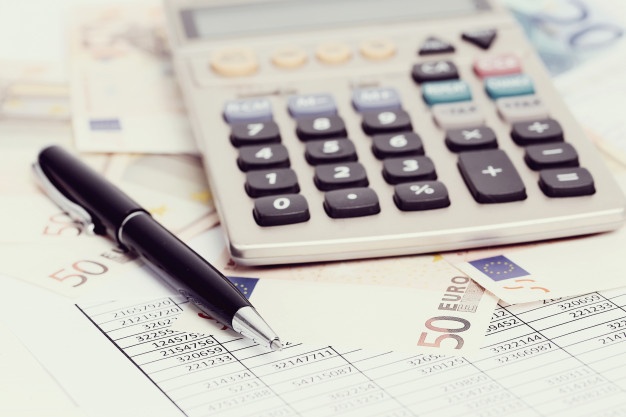
The accounting cycle is a sequence of processes that businesses must complete at the end of each accounting period to effectively manage their financial transactions and accounts. If you want to follow the accounting cycle, you’ll need to start configuring your accounting system for the time in question. When the accounting cycle comes to a finish, you’ll be prepared to close your books for the period and begin planning for the next accounting cycle to begin.
To properly set up your accounting and bookkeeping system when starting a small company, you must first create a chart of accounts. The graph of accounts is a list of all of the funds into which the firm deposits its financial information, and the accounting department maintains it.
A source document provides evidence that an accounting transaction has taken place in the transaction. It should be documented as a diary entry in the appropriate journal as soon as feasible.
When a small firm enters a financial transaction into their accounting journal, they record the transaction as a journal entry in their accounting journal. If you utilize dual entry accounting, you will make two entries: a debit from one account and a credit to another tab for each transaction.
The general ledger is the most critical accounting record in your company’s books. All of the company’s financial transactions are taken from the public accounting journal and recorded in the general ledger summarised.
The next step is to prepare a trial balance to ensure everything is in order!
At the end of each accounting period, you should adjust the entries in your accounting journals. Revenues and expenses to the accounting period to establish a more accurate accounting record. Adjusting entries can be divided into five categories: accrued revenues, accrued expenses, prepaid expenses, and depreciation. Any or all of these factors can significantly impact your monthly financial situation.
Preparation of financial statements is one of the final steps in the accounting cycle. And it is also one of the most time-consuming. Also. it is necessary to use the accounting journal and the general ledger to prepare the income statement, statement of retained earnings (which is followed by the balance sheet), and statement of cash flows (which follows the balance sheet
They are also known as closing entries. Revenue, cost, and drawing accounts are among the charges. The arrangements for assets, liabilities, and owner’s equity are not closed since the ending amounts of these accounts are the starting balances of the arrangements for the following accounting period.
The phrase accounting cycle refers to a corporation’s processes to handle all financial transactions within each accounting time. Before pursuing an accounting cycle, you must first configure your company’s accounting system for the period in question. In each accounting cycle, the aim is to finish and shut the books to begin the following cycle on schedule. Furthermore. the process may start by creating a chart of accounts that indexes all of the funds the firm enters its financial data.
You have to generate a source document to prove that each financial transaction took place as planned. Orders for goods and services, canceled checks, and invoices are examples of sorts of documentation that you will need to record in a journal entry as soon as possible after the transaction has taken place. Your journal entry will need to as a debit and a credit in your company’s dual entry accounting system. This is common in the accounting industry. Ensure that when you have documented all of your financial transactions in a general accounting journal. You move them to the public ledger in a summary format. Preparing a trial balance and, if necessary, making adjustments to accounting journal entries are essential steps in the trial balance preparation process.
After you have completed all of the general ledger entries, the following stage in the accounting process is to create a trial balance. The term “trial balance” refers to the process of total credits and debits from your general ledger and ensuring that they balance for the accounting period in which you are now engaging.
After your accounting period, you will need to adjust entries to correct any errors. You should include this in your accounting procedures since it will allow you to transfer income and costs to the accounting period in which they happened. The following are the four sorts of adjusting entries:
Remember that each of these sorts of adjusting entries can have a considerable influence on the final monthly balance.
Preparing your company’s financial statements is one of the last accounting procedures you must do before closing out the accounting cycle. It would help if you contained the following information in the next order:
Each financial statement will be using information from your general ledger and accounting journal. You will get these from your public log and accounting journal. Moreover, each announcement builds on the information provided by the preceding statement to provide you with the information you need.
You will submit closure entries in the last phase of the accounting cycle. This is to reduce the balance of any temporary accounts to zero. It permits you to go to the following accounting period without interruption. You should only shut the accounts for drawing, spending, and income only. And not the accounts for assets, liabilities, and the owner’s share of profit (if applicable). The ending balances of these accounts become the starting balances of the arrangements for the next accounting period.
Are You Paying A Formidable Amount Of Money For Your Bookkeeper Or Accountant? Now You Can Drastically Perform Cost-Cutting Measures By Simply Outsourcing Your Bookkeeping And Accounting Tasks.
Are You Looking For Bookkeeping Services In India? Are You Looking For Accounting Outsourcing Companies In India? Contact Us To See How Our Accounting Expertise And Personalized Services Can Save You Time, Money, And Frustration With Managing Your Finances.
Contact Us On Mobile Phone: +1 (650) 351 7900;
Or Put An E-Mail: Admin@Mfhills.Com;
And Do Visit Us On The Website: Https://Mfhills.Com/